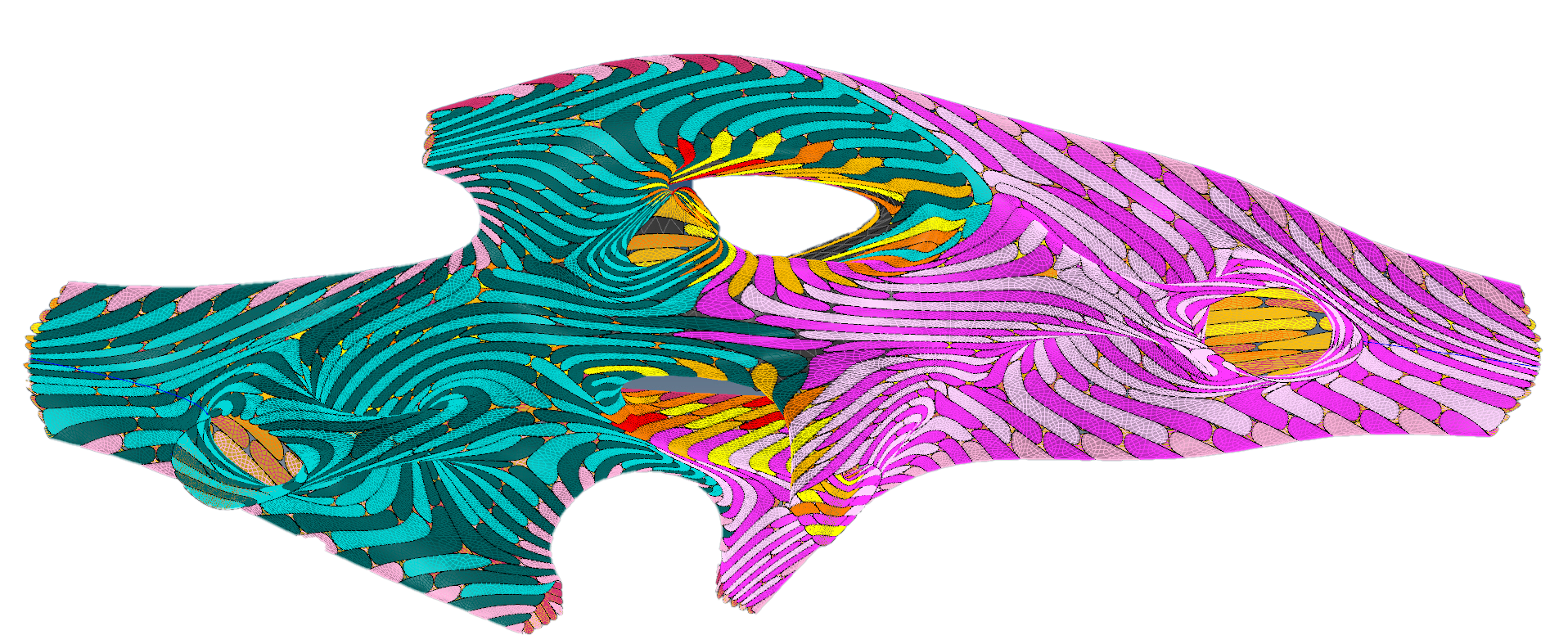ZEPHYR PAVILION
texas tech university - lubbock, texas
Commissioned by Texas Tech University
Design + Computation by MARC FORNES / THEVERYMANY
Engineering by CRAFT Engineering Studio
Photography by NAARO
Dimensions: 18’ H x 48’ W x 13’ D
Material: two layers of 3mm aluminum
Linear Cut Distance: 7,400 meters
Number of Parts: 2.343
Number of Rivets: 59,216
A grounded breeze resides in the courtyard of the Honors Residence Hall at Texas Tech University. The new Zephyr Pavilion defines an anchor in an active campus path and offers a destination for casual student meetups and study breaks. The gentle giant functions as a hybrid between interior and exterior space. Sweeping cantilevers offer shade between dueling columns and open windows to the sky at the knot-like center. Both a signal of interaction and an experience along the campus path, Zephyr pulls in walking paths like a current.
Freed from a solely structure-driven design, Zephyr is formed on a repertoire of carefully curated geometric principles. Two centralized loop columns mirror each other at the center openings, drawing topographical lines into smooth, volumetric rings and opening to the sky above. Columns expand into branching funneled bridges, giving the overarching canopy strong points of rest. Zephyr maintains a soft, yet intricate network that builds the foundation for self-supporting cantilevered wings. These effortless but essential moves of exacting capture and release breathe life into the hollow body of the form.
Walking through, graphic coloration dapples the interior condition, gradating in light greens from ground to locked, tapered edge. At a distance, the striped skin mimics a field of softened dazzle camouflage. Coloration blends on a whole to highlight moments in the flowing form as it dips in and out of shadows. The striated system is both coloration and structure. Each stripe holds a single color and distinct role in upholding the double curvature system.
The structure is a carefully balanced ecosystem with each gently bent geometric stripe playing an essential role. Overarching curves are born of many singular parts joining together in sequence building strength into the whole. The overall form takes shape while assembling one part at a time to its neighbor. Progressive assembly requires a very precise sequence in construction; the connection of parts primes the overall form for the next piece. If a part is forced into place out of sequence it will not work. Little by little, one part at a time, the work will come together. Timing has become a vital component of the assembly process as the primary driver for shaping a surface.
In the past, our approach to structure was based in with layered rings and stripes. Now oriented 45 degrees to the progression of the vertical span, striping parts appear to be interwoven in the description. With this rotation, each layer both carries loads and acts as a connection point for the meeting part, thereby facilitating the thinnest possible material thickness.
The logic of construction is pre-programmed at the unit of the stripe, and with a degree of approximation and tolerance, the piece takes its own geometry. Controlled folds in a range from 6 to 15 degrees produce tangential continuity of the curvature, which yields relaxed movements between the angular underlying geometry.
Zephyr provides an opportunity for connection and camaraderie amidst a bustling microcosm. Inside a wind tunnel, through a colonnade and under a canopy, the campus community will find a slowed moment of peace, as if carried away by pleasant, westerly wind.













